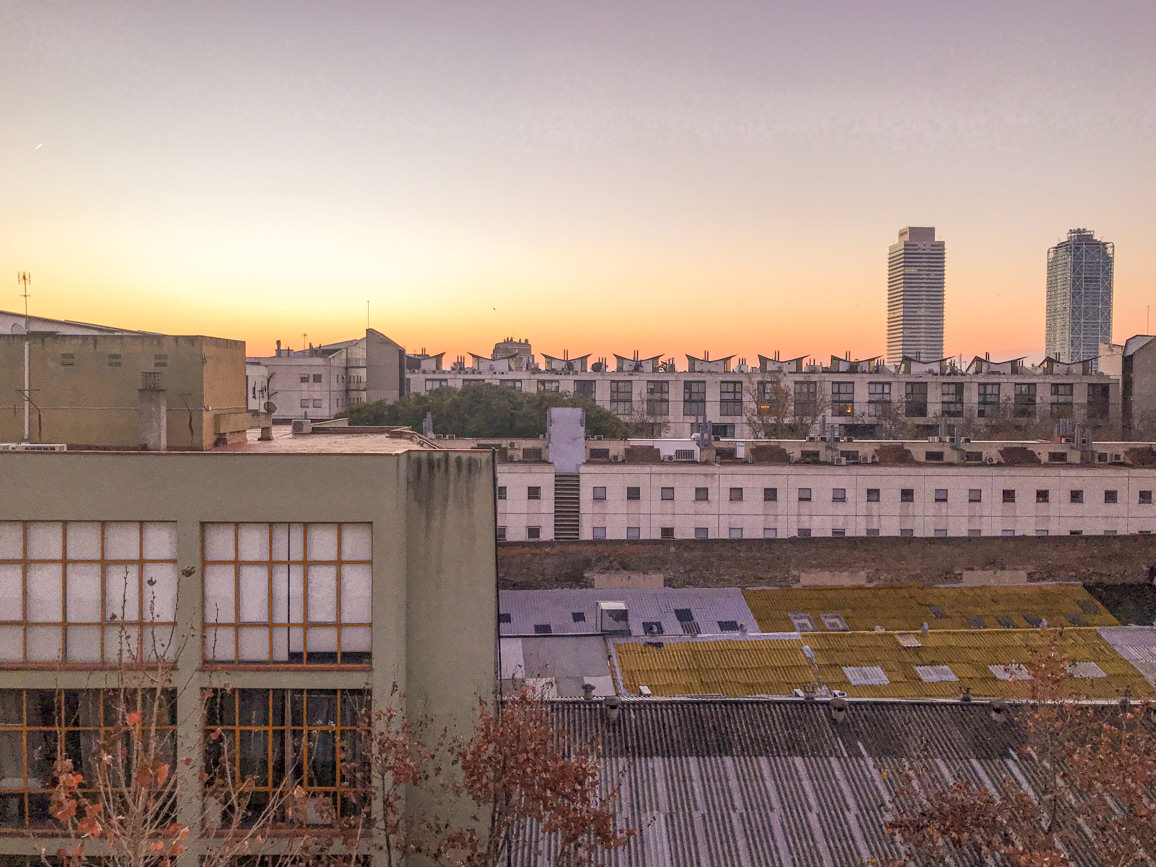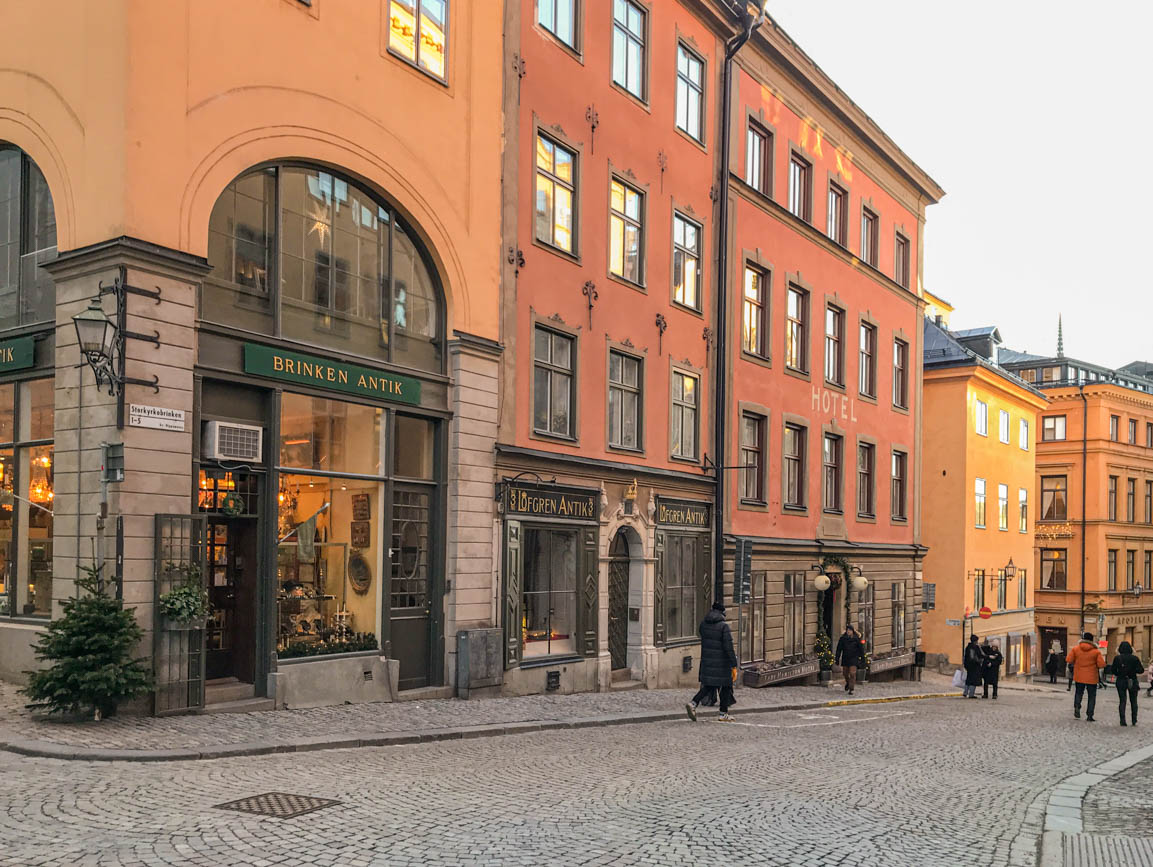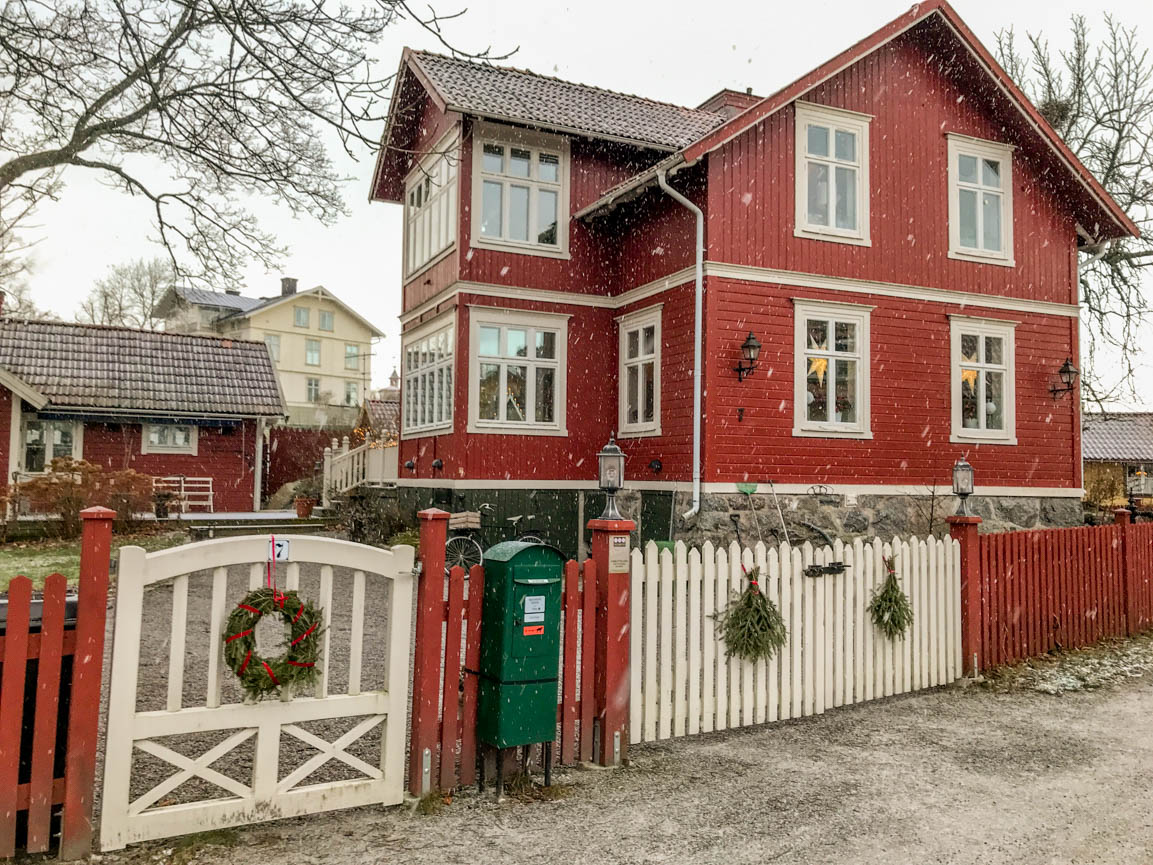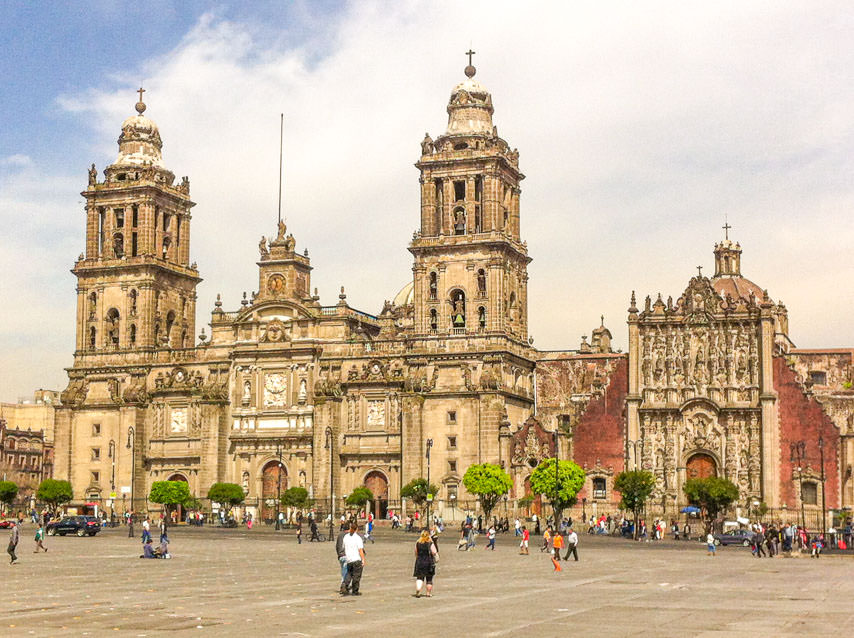
Would you like to know what to see in Mexico City and Teotihuacán? The capital of Mexico as well as its nearby ancient Aztec site are waiting for you! Read this travel guide to learn all the tips!
Mexico City
Mexico City was my second stop in the 10-day itinerary that took me first to the northeastern part of the country and then to the Yucatán peninsula. During my stay in the capital, I stayed at a friends’ apartment.
What to know about Mexico City
Mexico City is not only the capital of Mexico but also the most densely populated city in Latin America. With a never ending variety of sightseeing spots and restaurants, you’ll never get bored here! Over 20 million souls live in this bustling metropolis.
The city is built on what was Lake Texcoco and has sunk (and continues to sink) over 9 meters in the past 100 years. Another fun fact is that Mexico City’s metro is the largest in Latin America and one of the cheapest in the world. However, I didn’t use it because my local friends told me it was unsafe. I caught authorized taxis to get around instead. The downside, though, was the unbearable traffic and the long time it took to get from one place to another.
In any case, I really enjoyed my stay in town and wish I could have stayed longer. There’s so much to see and do! Are you already feeling the urge to explore Mexico City? Let’s get started!
What to see in Mexico City
Here’s a list of the places I visited during my vacation in the capital of Mexico. Below you will also find a map where I located all those spots.
- Plaza de la Constitución (informally known as El Zócalo): here lies the oldest part of town!
- Admire the murals by Diego Rivera at the Secretary of Public Education
- Palacio de Bellas Artes, the cultural hub in Mexico City
- San Ángel, a charming neighborhood
- Coyoacán, the true gem of Mexico City
- Feel classy in Condesa
- Chapultepec: visit the forest and the castle to feel miles away!
- Take a boat tour in Xochimilco
- Basílica de Guadalupe, the national shrine of Mexico
Plaza de la Constitución (informally known as El Zócalo)
Here lies the oldest part of town! Plaza de la Constitución is the world’s third largest square and is is surrounded by the Metropolitan Cathedral of Mexico City, the National Palace, the Old City Hall and the Government Building. This massive square is situated at the exact center of what once was the Aztec Empire (Tenochtitlán being the name of the former capital).
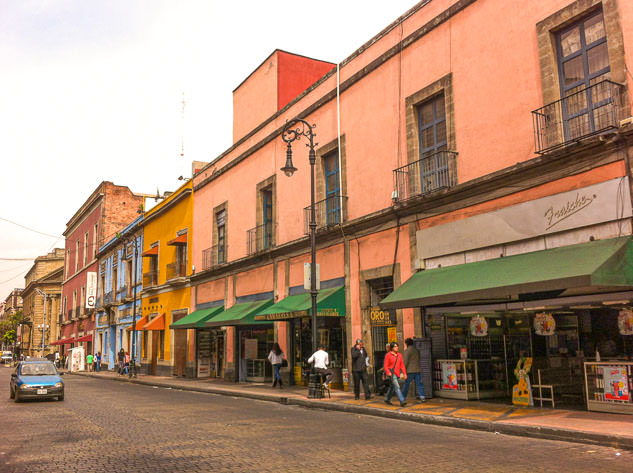
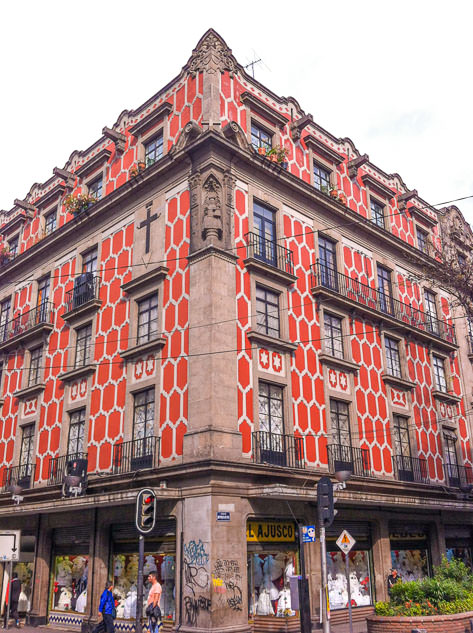
After visiting the Cathedral, I took Calle Moneda and walked towards the historic center. I was amazed by the hubbub in the streets, filled with food stalls, people coming and going, and cars. Strolling through the streets I passed the Church of the Holy Trinity, Plaza de Loreto, Templo Mayor (an ancient Aztec ceremonial center) and Plaza de Santo Domingo.
Admire the murals by Diego Rivera at the Secretary of Public Education
In the afternoon. I stopped at the Secretary of Public Education to admire the incredible murals by Diego Rivera and his disciples. This Mexican painter, married to the famous artist Frida Kahlo (see below for her museum in Coyoacán), started working on the murals in 1922. These colorful paintings glorify Mexico’s peoples and history and depict the laboring class, representations of the science or even political themes such as the excesses of capitalism and the agrarian revolution.
The murals are distributed among three floors. The building is open weekdays and is free to the public.
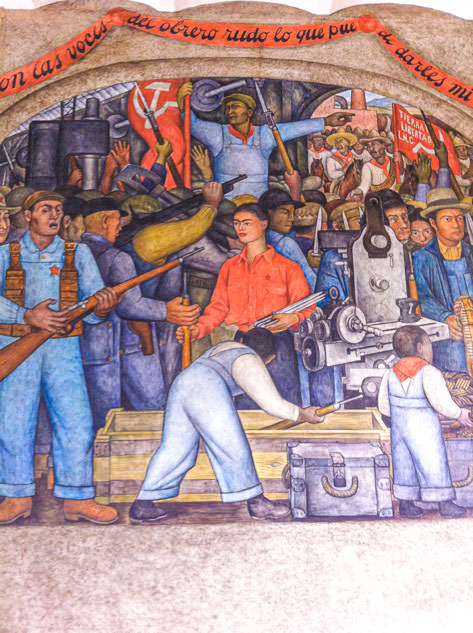
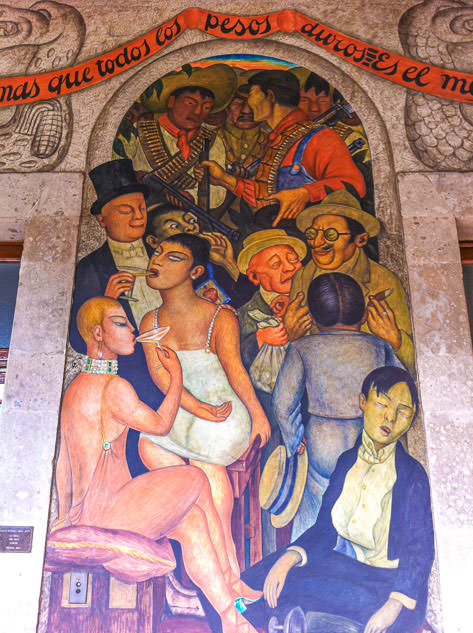
Palacio de Bellas Artes, the cultural hub in Mexico City
I walked until I reached the Alameda, a beautiful park where the imposing Palacio de Bellas Artes (Palace of Fine Arts) is located. This cultural centre was built between 1904 and 1934 and contains a large theatre, concert hall, museum of popular arts, halls and galleries for paintings (including by Diego Rivera) and other works of art.
Nearby you’ll find the Torre Latinoamericana (a business skyscraper) and the Casa de los Azulejos (House of Tiles, a Baroque palace).
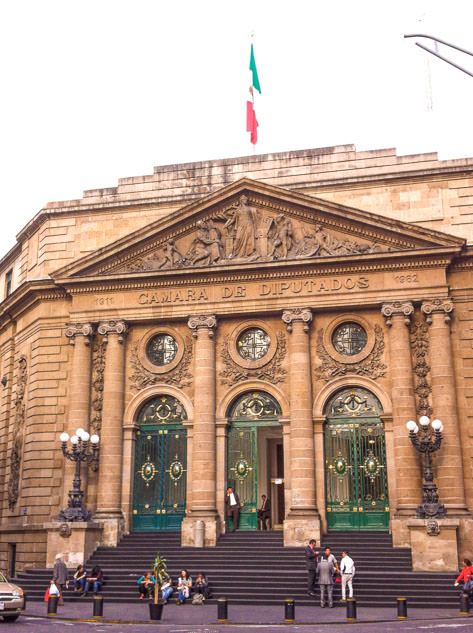
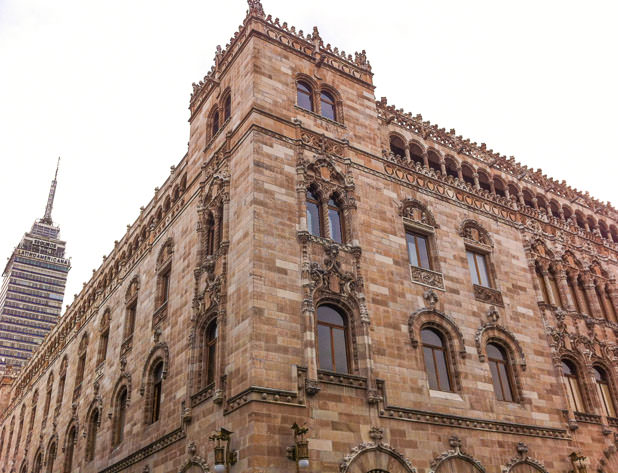
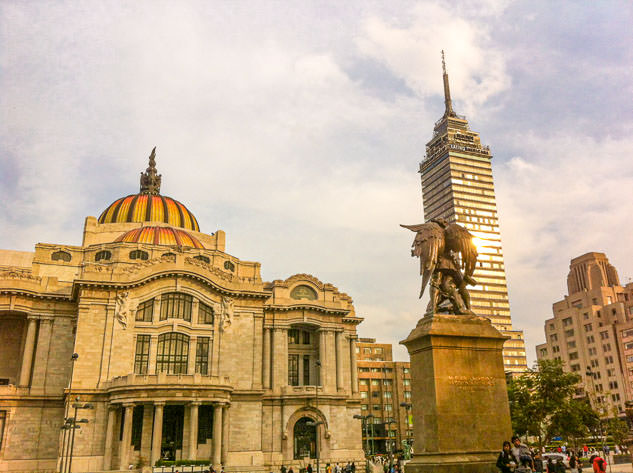
San Ángel, a charming neighborhood
Situated close to my friends’ apartment, I passed by the beautiful neighborhood of San Ángel. Walk down the cobbled street of Galeana for a feel of Mexican architecture and color. Not far from there you’ll stumble upon Museo Colonial del Carmen, a former Carmelite monastery from the 17th century. From there I headed to Parque de la Bombilla and discovered a nearby corner that I absolutely loved: the Federico Gamboa square, which houses the intimate chapel of San Sebastián Mártir and the house of Gabriel García Márquez.
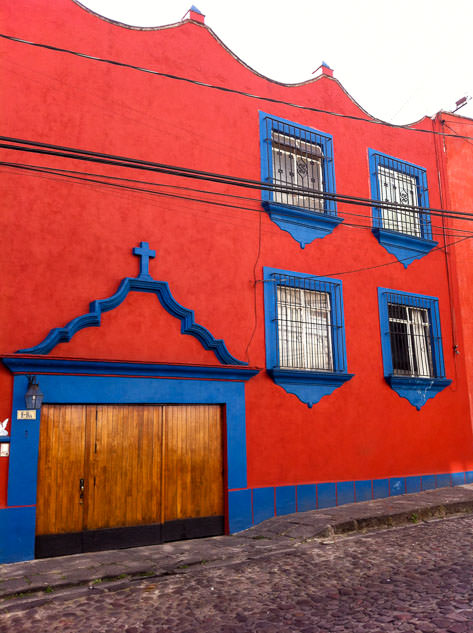
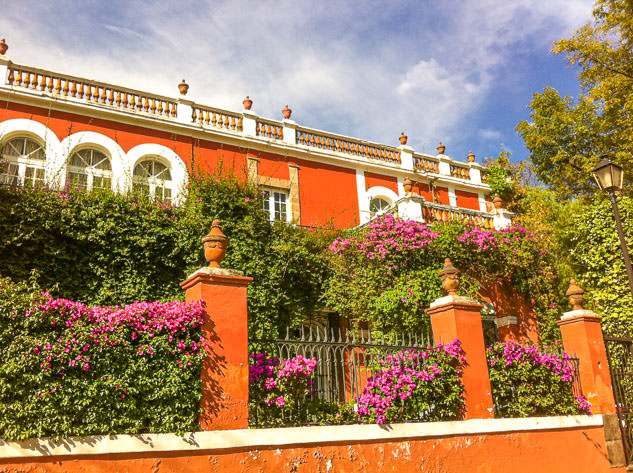
Coyoacán, the true gem of Mexico City
A short walk from San Ángel lies Coyoacán, a true gem filled with colorful houses and cobbled streets. The long Francisco Sosa Avenue, surrounded by charming corners, leads to Plaza Hidalgo, the heart of the neighborhood.
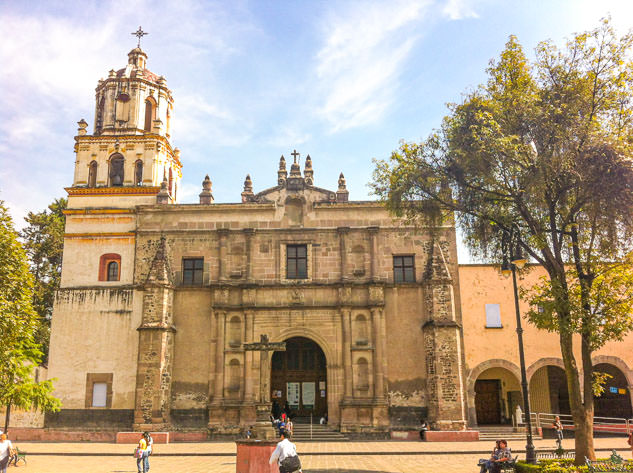

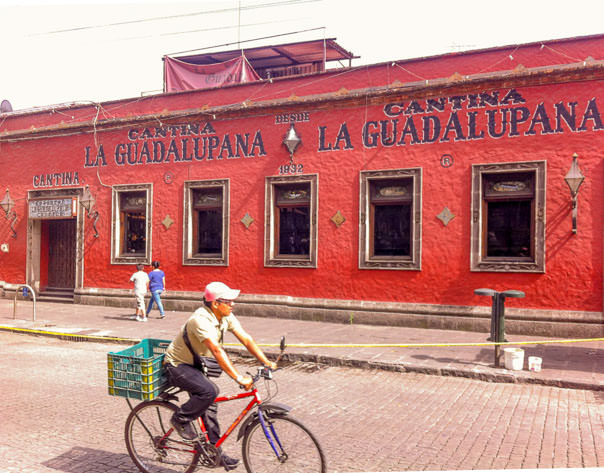
Near the main square you will find the houses of two famous characters: Frida Kahlo and León Trotsky. I went to visit the museum dedicated to Mexican artist Frida Kahlo, located in the Casa Azul, the blue house in which she lived with Diego Rivera. Although I knew about her personal story (my Mum is a fan), I was still captivated by the power of her colorful work, her collection of pre-Hispanic art and the terrible prosthesis she had to endure during her painful life.
A few streets away you can also visit the León Trostky Museum, housed where this Russian politician lived for 15 months before being assassinated.
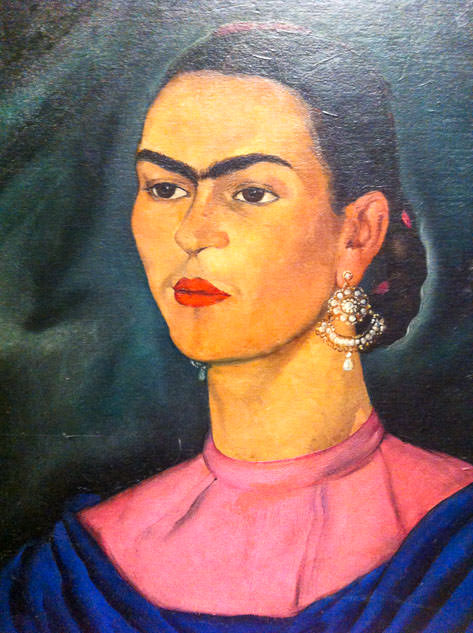
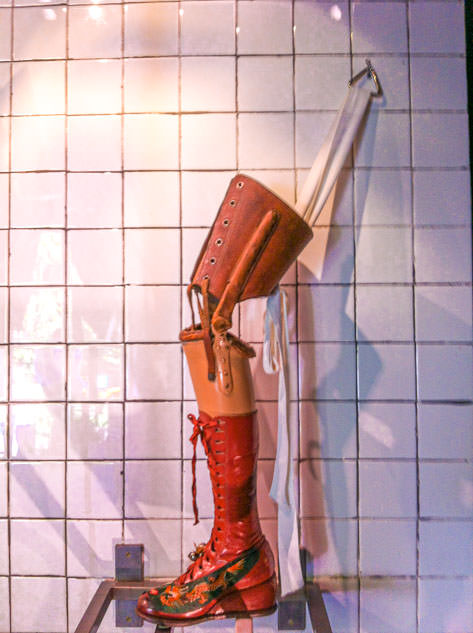
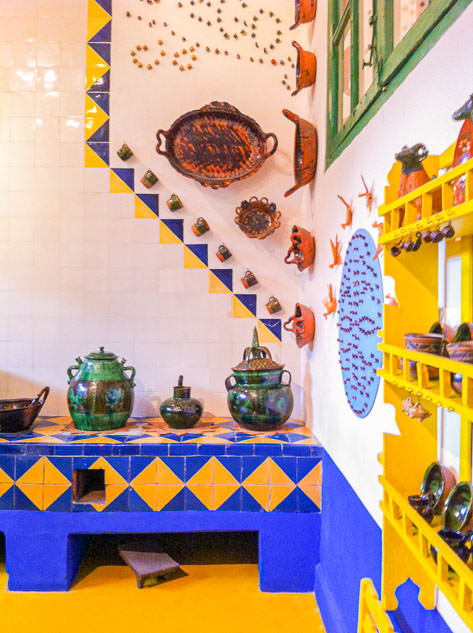
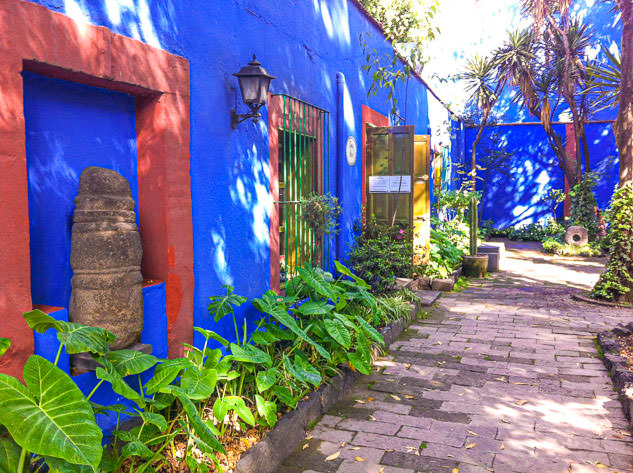
Feel classy in Condesa
After visiting the Frida Kahlo Museum, I took a taxi to go to the Condesa neighborhood. By the way, the taxi driver called Ramón happened to be really helpful in my trip to Teotihuacán a few days later (see below). The area of Condesa is considered to be fashionable and popular with younger businesspeople, students and pet lovers. It features a large number of international restaurants, bars and nightclubs. I walked around Parque España and Parque México to get a feel of the trendy vibes.

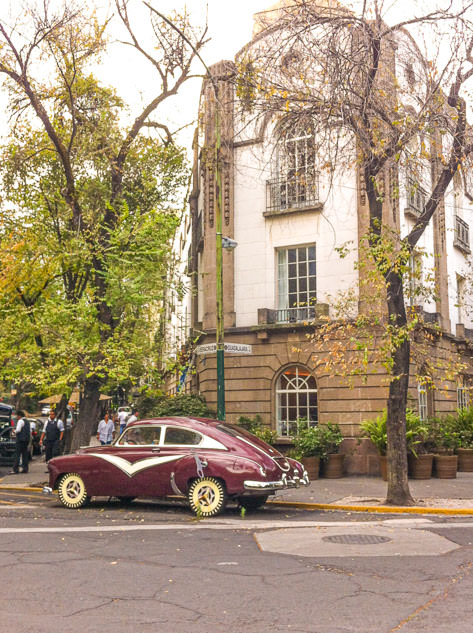
Chapultepec: visit the forest and the castle to feel miles away!
During my third day in Mexico City, I headed to the Chapultepec forest, which would be the equivalent of Central Park in New York. This massive space is located on one side of the wide Paseo de la Reforma. Near there lies the Monument to the Revolution, a tribute to the Mexican revolution inaugurated in 1938.
In Chapultepec, I recommend you to visit the Castle, where Emperors Maximiliano and Carlota lived during their brief reign in the country around 1860. Today it houses the National History Museum.
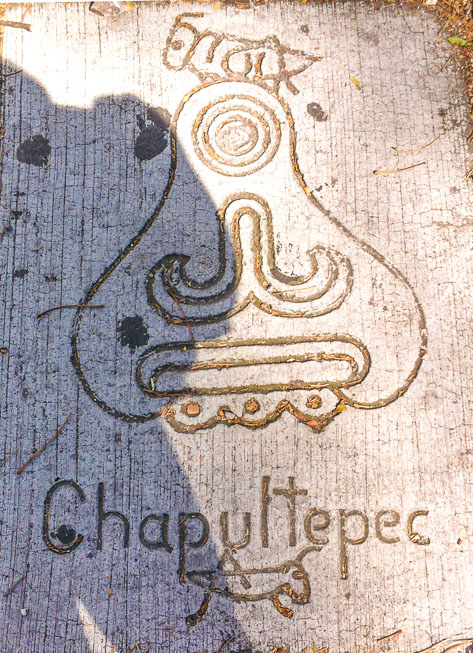
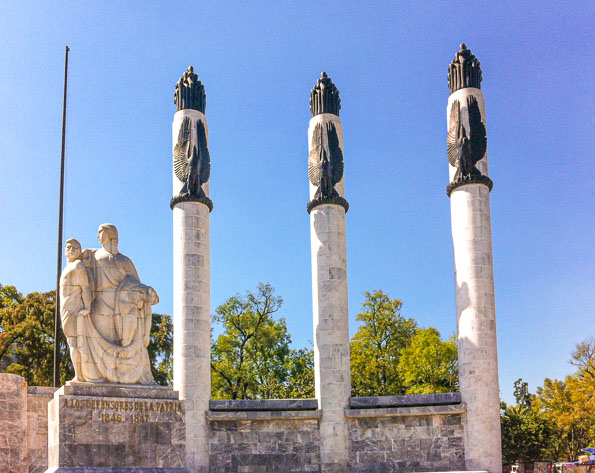
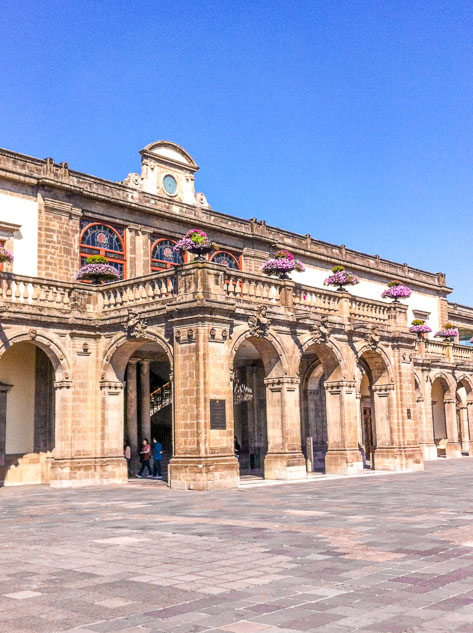
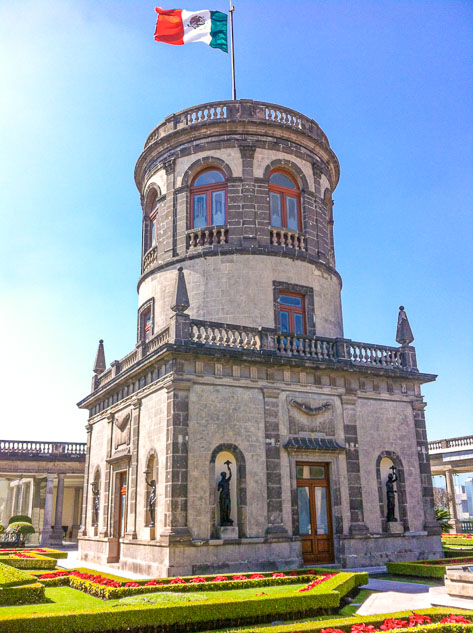
Finally, you can hop on a tourist train, which will take you to the National Anthropology Museum displaying artifacts from the ancient Mayan civilization. This museum is actually worth a full day, should your travel schedule allow.
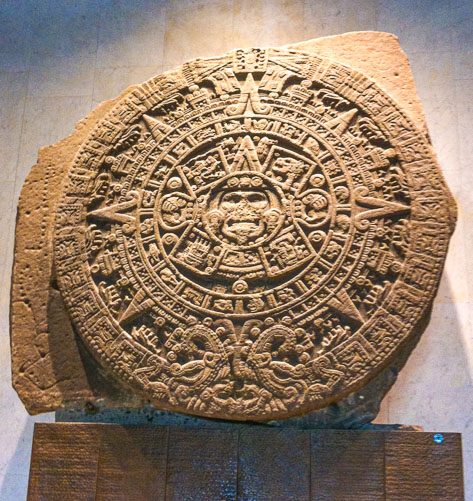
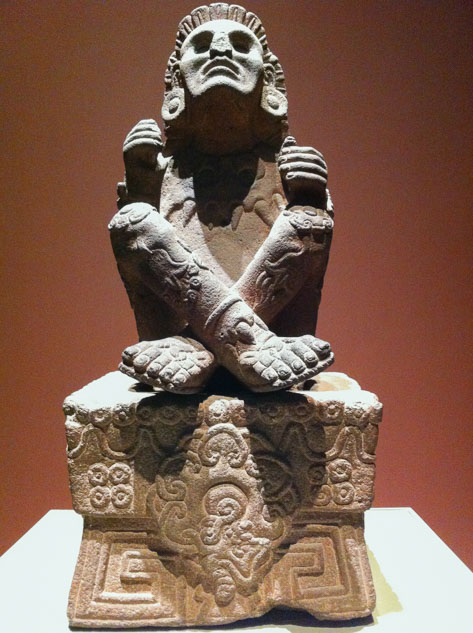
Take a boat tour in Xochimilco
This is by far one of the most popular activities in Mexico City, although I didn’t get the time to do it. It’s supposed to be fun though!
The famous canals of Xochimilco, the last remnants of the extensive transportation system created by the Aztecs, are located in the southern area of town. The colorful gondolas take visitors for walks alongside the boats of food vendors, artisans and mariachis. The atmosphere is festive, especially on the weekends. Tourists can also visit the chilling Isla de las Muñecas, which is supposedly haunted.
Basílica de Guadalupe, the national shrine of Mexico
Venerated throughout the country, I had no clue there were actually two basilicas. The ancient one is beautiful although quite deteriorated and with a very twisted structure, while the modern one is ugly. Go up the stairs to the Cerro de Tepeyac, where the Roses Chapel is located. There is also a viewpoint nearby from which you’ll see the immensity of Mexico City.
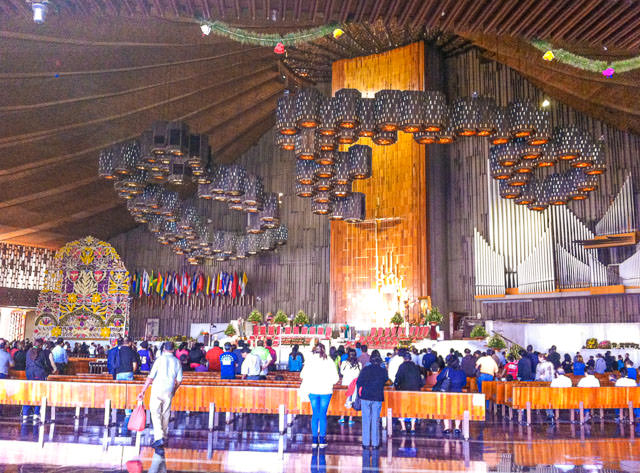
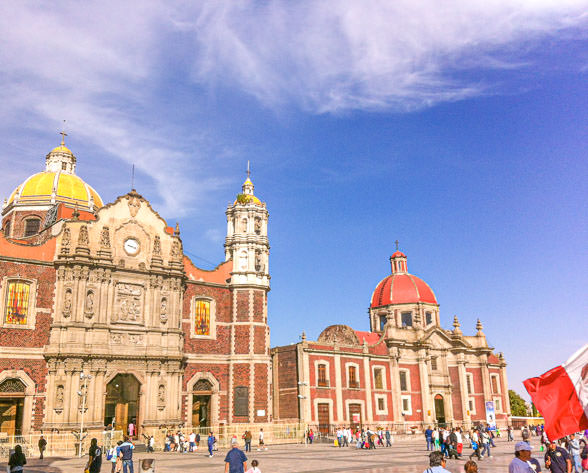
Where to eat in Mexico City
- Café Tacuba: located in the historic center, I had lunch in this restaurant during my first day wandering the streets of Mexico City. I ordered a dark Modelo beer along with Tacuba enchiladas (including chicken, cheese and spinach sauce). That was a filling meal and I left with lots of energy to keep discovering this busy town.

- Dulcería de Celaya: if you have a sweet tooth as I do, stop here for a break. This old-fashioned candy store operating since 1874 offers traditional Mexican sweets. I tried a gloria and a lima rellena de coco (lime filled with coconut).
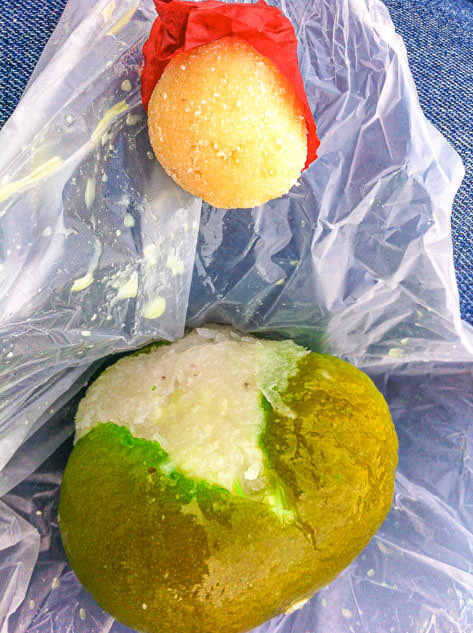
- El Tizoncito: I came to this local chain with restaurants all over Mexico City for dinner with my friends. We ordered a double round of tortilla chips as well as tacos al pastor (marinated pork, onion and pineapple). Yum!
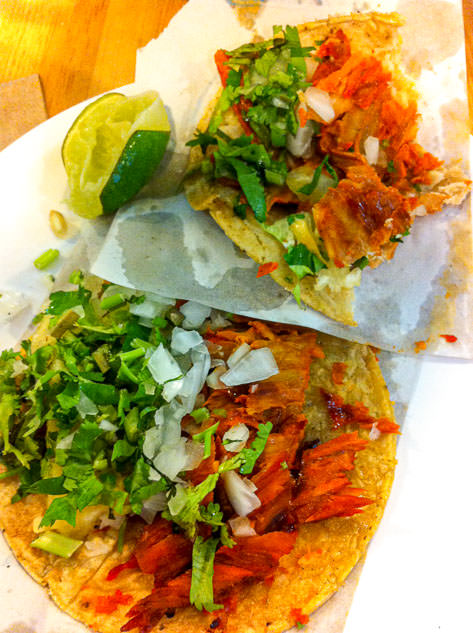
- Chucho El Roto: in case you’re around the neighborhood of San Ángel, don’t miss this spot. I stopped by for breakfast and had a true feast to start the day! I had an orange juice, yolk bread with Oaxacan chocolate (I found it more liquid than the Spanish one and with a slight cinnamon flavor) and scrambled eggs with beans, chili peppers and avocado.
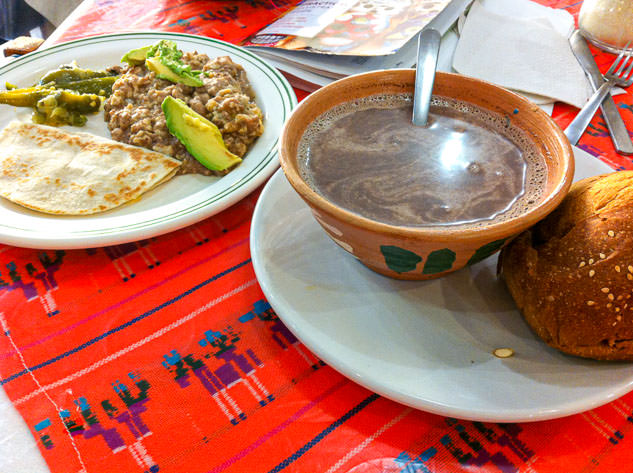
- El Ocho: I met with my schoolmate Claire and her cute daughter in this modern café in Condesa.
- La Buena Fe: I came here for dinner with my hosts and I tried the delicious cochinita pibil tacos.
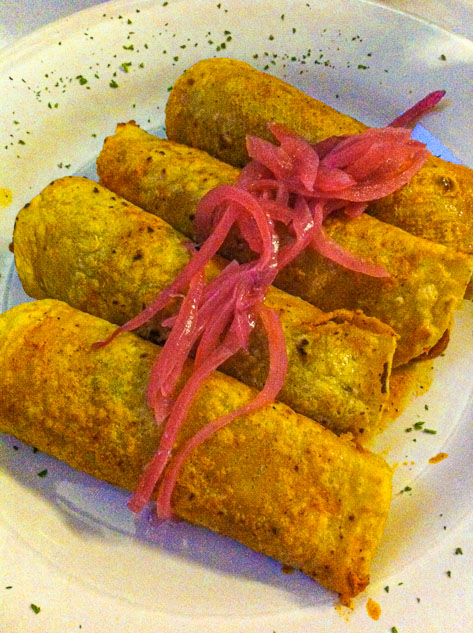
- Taquería La Chinampa: I dined here with a few friends and loved the tacos al pastor, chicken gringa and café de olla (coffee pot).
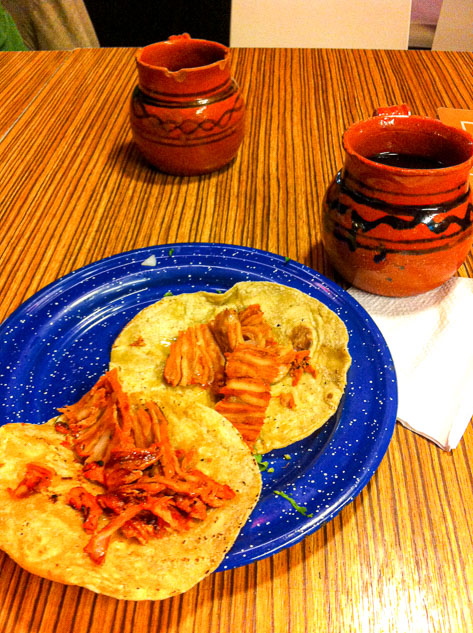
- La Casa de Toño: after the intense daytrip to Teotihuacán with my friend Javi (see below) , we came to this restaurant for an early dinner. We tried pozole with chicken (a soup with corn kernels and many more ingredients), assorted flutes of potatoes, chicken and meat, and a mushroom and cottage cheese quesadilla. We asked for Tecate beers to drink.
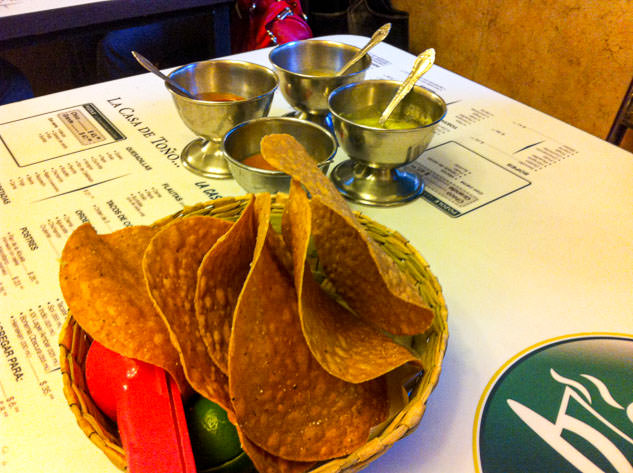
Teotihuacán
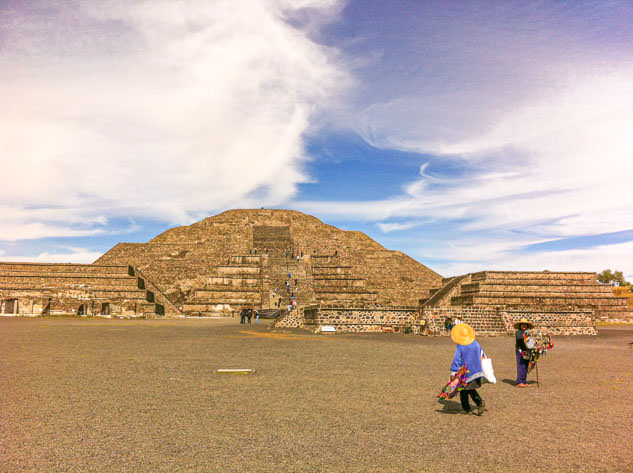
Located just one hour away from Mexico City, the nearby ancient Aztec site of Teotihuacán awaits for you to discover its secrets. I visited it with my friend Javi from Washington DC, who had casually landed in town the night before.
We went there by taxi with Ramón, the friendly taxi driver that I mentioned above. The good thing is that he took us on a full tour for the whole day.
Our first stop before entering the Teotihuacán compound, was a nearby area where an Aztec local explained us how they used some native plants. We also tried pulque and tequila and bought indigenous crafts.
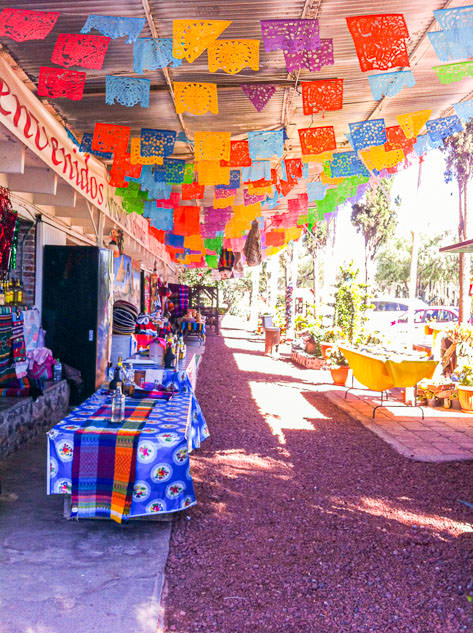
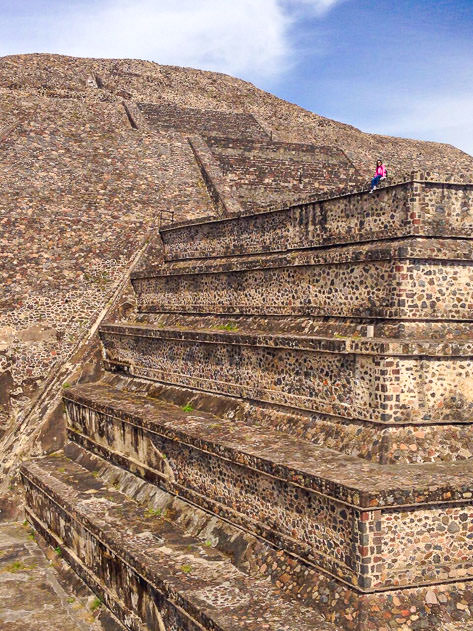
After this cultural introduction, we visited the Teotihuacán archaelogical site. The main highlights are the impressive pyramids dedicated to the Sun and the Moon. What a steep climb it was, but I can assure you that the views were worth it!
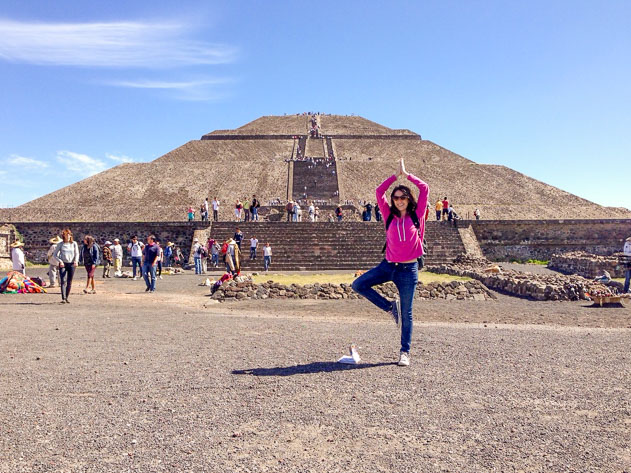
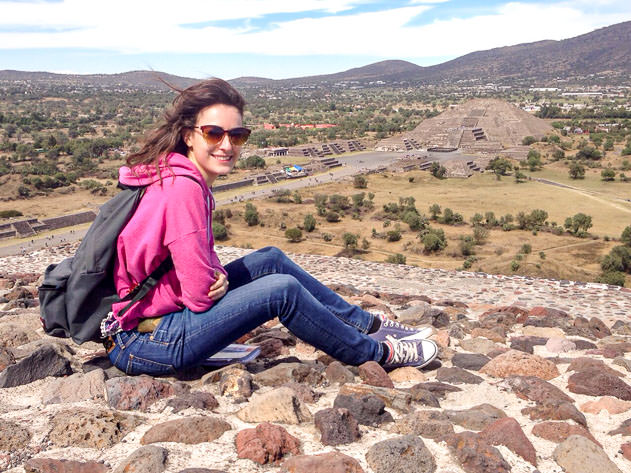
Listed as a UNESCO site since 1987, Teotihuacán is known today as the site of many of the most architecturally significant Mesoamerican pyramids built in the pre-Hispanic Americas. With a population estimated at 125,000 or more at its zenith, this site is also significant for its Avenue of the Dead as well as its vibrant, well-preserved murals.
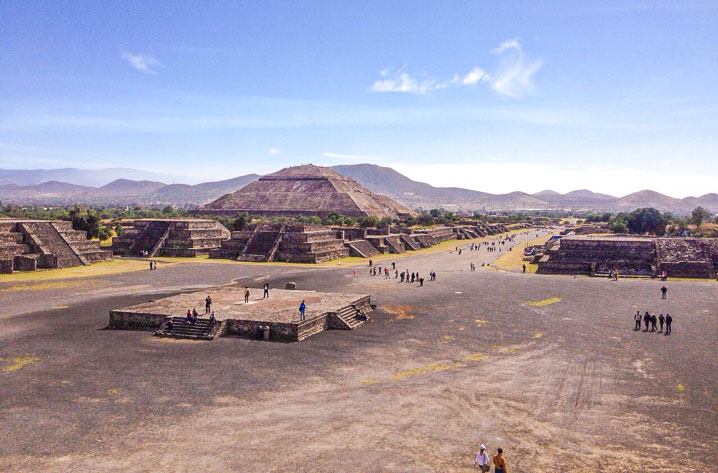
And this is a wrap! Bye bye, Mexico City and Teotihuacán, I’ll be back! Next stop, Cancún and the Yucatán peninsula!
Feel free to comment below if you liked this post about my second stop in my Mexico route!

